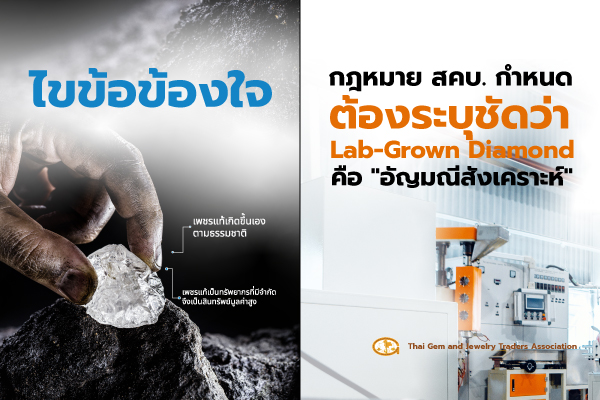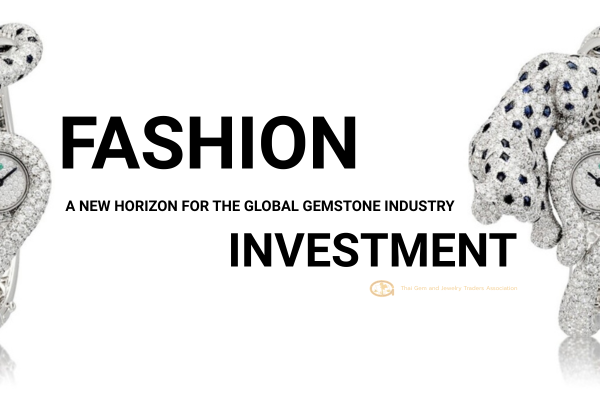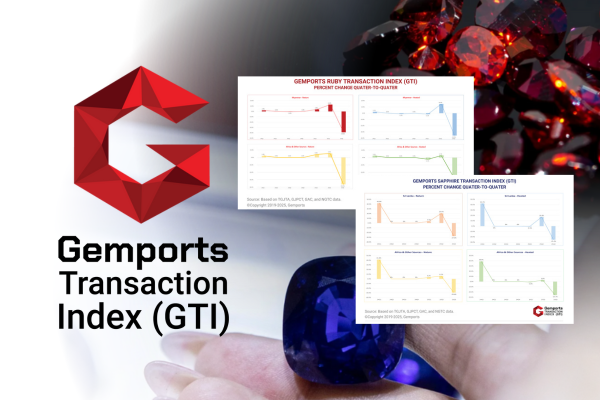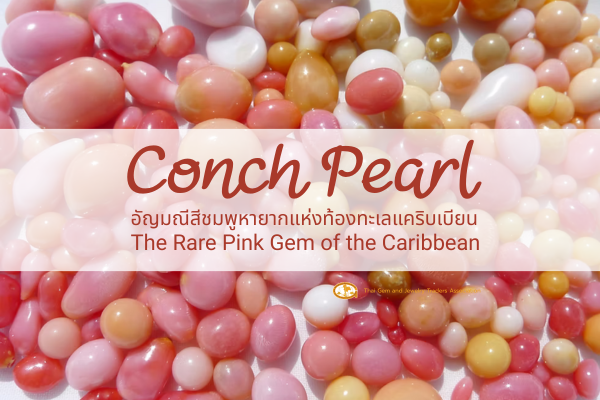


Clearing up the confusion about Lab-Grown Diamonds. TGJTA summarizes the OCPB law that clearly defines them as "synthetic gems," complete with case studies on the impact on consumers and the global diamond market.
The Thai Gem and Jewelry Traders Association (TGJTA), as a central organization committed to promoting and upholding the highest industry standards, wishes to communicate to all entrepreneurs and consumers to foster a correct and clear understanding of the status of laboratory-created diamonds, or Lab-Grown Diamonds (LGD). According to Thai law and international standards, these are considered "synthetic gems" and not "diamonds" that originate from nature.
It has been found that the use of ambiguous terms such as "lab diamonds," "real lab-grown diamonds," or "cultured diamonds" in marketing communications is creating a risk of undermining the long-standing trust and stability of the Thai gem and jewelry market. This article, therefore, aims to clarify the legal provisions, commercial reasoning, and case studies from around the world to make all sectors aware of the importance of correct terminology and accurate information.
The first and most important point is the law of Thailand, specifically the Notification of the Committee on Labels, No. 7 (B.E. 2544), which is overseen by the Office of the Consumer Protection Board (OCPB). This regulation provides a clear and indisputable framework:
Definition: "Cut Gemstone" refers exclusively to diamonds and other precious stones that are from nature.
Labeling: Materials synthesized to imitate natural gemstones must be labeled as "Synthetic Gemstone."
Prohibition: The term "synthetic diamond" is strictly forbidden, as is pairing the name of a natural gemstone with the word "synthetic."
Therefore, marketing Lab-Grown Diamonds using the word "diamond" in any form is a violation of this notification and may lead to legal action—a risk that entrepreneurs must be highly aware of.
Allowing the line between natural diamonds and synthetic gems to blur brings about a chain of negative consequences for all sectors:
Eroding Consumer Confidence: Trust is the foundation of the jewelry business. If consumers cannot be certain what they are buying, they will hesitate to purchase, which will impact the entire industry.
Corroding the Value of Natural Diamonds: Natural diamonds are valuable because of their "Rarity," "Store of Value" (Wealth), and "Uniqueness," having been formed over billions of years deep within the earth. In contrast, synthetic gems can be produced in unlimited quantities in a factory. Presenting these two as the same thing eliminates the value of rarity and directly affects the value of natural diamonds held by consumers and traders.
Creating Turmoil in the Retail Market: Entrepreneurs who adhere to honesty and stock natural diamonds will face unfair price competition from adulterated goods, which could lead to price wars that destroy profits and force businesses to close.
To highlight the real damage that has occurred, TGJTA has compiled international case studies showing the effects of unclear information about Lab-Grown Diamonds on both consumers and businesses.
Case Study 1: Consumer Lawsuits in the United States (Consumer Lawsuits & Value Proposition)
The Incident: In recent years, class-action lawsuits have been filed against several major retailers in the United States. Consumers argued they were misled into believing that Lab-Grown Diamonds had a value equivalent or similar to natural diamonds and would retain their value over time. In reality, they could not be sold back or resold.
Impact on Consumers: Severe financial loss from the misunderstanding that they were purchasing an asset that would hold its value. This issue of value communication is so complex and sensitive that the National Advertising Division (NAD) had to investigate advertising claims to ensure clarity.
The Lesson: Marketing communications that focus only on physical similarities while ignoring the truth about the "vastly different value proposition" is a form of misrepresentation that can lead to financial damage and legal disputes.
Case Study 2: FTC Action Against Non-Disclosing Retailers
The Incident: The U.S. Federal Trade Commission (FTC) sent official warning letters to several companies that advertised and sold Lab-Grown Diamond jewelry without using clear and sufficient qualifiers as required by law, potentially confusing consumers into thinking they were natural diamonds.
Impact on Entrepreneurs: Damage to reputation, fines, and being forced to revise entire advertising campaigns, which created enormous costs and brand damage. JCK, a leading industry magazine, reported analytically on the FTC's concerns in this matter.
The Lesson: Regulatory bodies worldwide prioritize transparent disclosure. Attempting to use vocabulary loopholes to gain a competitive advantage is a risky and unsustainable strategy.
Case Study 3: Confusion in the Indian Market and the Impact on Small-Scale Producers
The Incident: India, the world's diamond cutting and polishing hub, faced the problem of Lab-Grown Diamonds being mixed into parcels of small natural diamonds (melee diamonds). This issue severely damaged the credibility of suppliers, forcing India's Gem & Jewellery Export Promotion Council (GJEPC) to implement urgent measures to tackle the problem.
Impact on Entrepreneurs: Higher operational costs, decreased trust in the supply chain, and a tarnished reputation for the Indian market as a reliable source of natural diamonds. Major media outlets like The Times of India reported on the heightened vigilance of traders who had to send diamonds for testing to restore confidence after the incidents.
The Lesson: A lack of transparency at any point in the supply chain can cause widespread damage throughout the entire system, from the producer to the end retailer.
As an association that serves as a pillar of the industry, we call for and encourage all entrepreneurs to:
Adhere to Thai Law: Use the term "Synthetic Gem" for Lab-Grown Diamonds in all communications and product labeling.
Educate Consumers: Communicate transparently about the crucial differences in origin, rarity, and long-term value retention.
Create Supply Chain Transparency: Verify and guarantee that the products you purchase and sell are correctly identified by their origin.
Protecting the value of natural diamonds is about protecting the future and sustainability of all our businesses. TGJTA is ready to work with its members and government agencies to maintain the standards and credibility of the Thai gem market, befitting its status as a globally recognized gem and jewelry hub.
Q: Are Lab-Grown Diamonds fake diamonds?
A: Lab-Grown Diamonds are "synthetic gems." They have the same chemical properties as diamonds but are not created by nature and do not have the same long-term investment value as real, natural diamonds.
Q: Is it illegal to buy or sell Lab-Grown Diamonds?
A: It is not illegal, but the seller must provide truthful information and label the product as a "Synthetic Gem" in accordance with the OCPB's notification.

A "Convergence of Value"—a phenomenon where jewelry and gemstones are no longer mere accessories, but have evolved into one of the world's most robust Alternative Asset Classes.

ในไตรมาสที่ 3 ปี 2025 ตลาดประสบกับภาวะขาดแคลน ทับทิมคุณภาพสูง* ในเกือบทุกกลุ่ม การลดลงโดยรวมของดัชนี GTI ทับทิมนั้น เกิดขึ้นหลักๆ จากสัดส่วนการซื้อขายทับทิมขนาดใหญ่ (3 กะรัตขึ้นไป) ที่ลดลง รวมถึง ไพลินคุณภาพสูง* โดยเฉพาะที่มีน้ำหนักมากกว่า 5 กะรัต เริ่มหา

In the world of precious gemstones, there lies a hidden treasure that originates not from beneath the earth, but from the depths of the sea within a conch shell.